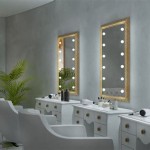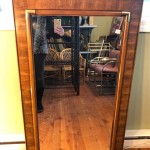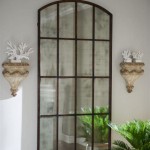How To Hang a Frameless Mirror With Clips
Frameless mirrors offer a sleek, modern aesthetic, integrating seamlessly into various interior design styles. Their minimalist design, however, presents unique challenges when it comes to installation. Unlike framed mirrors with pre-attached hanging hardware, frameless mirrors often require specialized clips for secure and stable mounting. This guide provides a comprehensive overview of the process of hanging a frameless mirror using clips.
The first step involves selecting the appropriate clips. Several types of mirror clips exist, each designed for specific mirror thicknesses and weights. Common types include J-clips, L-clips, and Z-clips. J-clips and L-clips are typically used for lighter mirrors and offer a more minimalist look, as they partially conceal themselves behind the mirror's edge. Z-clips, comprising two interlocking pieces, offer superior support for heavier mirrors and provide greater stability.
Careful measurement is crucial for achieving a level and balanced installation. Begin by measuring the mirror's dimensions. This will determine the number and placement of the clips. As a general rule, smaller mirrors may require only two clips, while larger, heavier mirrors will necessitate four or more. Distribute the clips evenly along the mirror's edges to ensure proper weight distribution and prevent sagging.
Before marking the wall for drilling, consider the desired height and position of the mirror. Account for any surrounding fixtures or furniture. Using a pencil and a level, mark the locations where the clips will be attached to the wall. Ensure the markings are level and accurately reflect the pre-determined clip placement on the mirror.
Drilling the correct size pilot holes is crucial for securely anchoring the clips. Consult the clip manufacturer's instructions to determine the appropriate drill bit size. The pilot holes should be slightly smaller than the screws provided with the clips to ensure a tight fit. When drilling, ensure the drill is held perpendicular to the wall to prevent the screws from stripping or becoming loose.
Once the pilot holes are drilled, insert the wall-side portion of the clips. If using anchors, insert them first before fastening the clips with the provided screws. Ensure the clips are flush against the wall and securely fastened. Double-check the alignment and levelness of the clips before proceeding to hang the mirror.
Carefully lift the mirror and place the edge into the clips. Different clip types require different insertion methods. J-clips and L-clips typically involve sliding the mirror edge into the clip until it rests securely. Z-clips require aligning the two interlocking pieces, one attached to the wall and the other to the back of the mirror. Gently push the mirror against the wall until the clips engage completely.
After hanging the mirror, inspect the installation to ensure it is level and secure. Use a level to verify the alignment. Gently push against the mirror to check for any movement or instability. If necessary, adjust the clips or tighten the screws to achieve a firm and stable hold.
For added security, especially for heavier mirrors, consider applying mirror adhesive to the back of the mirror before placing it in the clips. Mirror adhesive provides extra support and helps prevent the mirror from shifting or vibrating. Follow the adhesive manufacturer's instructions for proper application and curing time.
Various factors influence the complexity of hanging a frameless mirror with clips, including the mirror's size and weight, wall type, and clip design. For extremely large or heavy mirrors, it is recommended to seek professional assistance. Professional installers possess the experience and equipment necessary to ensure safe and secure installation.
Choosing the correct screws and anchors is paramount for a secure installation. Different wall types require specific fasteners. For drywall, use drywall anchors designed for the weight of the mirror. For masonry walls, use masonry screws or anchors. Consult a hardware professional to determine the appropriate fasteners for your specific wall type.
Protecting the mirror during installation is essential to prevent scratches or chips. Wear gloves when handling the mirror to avoid leaving fingerprints. Consider placing a soft cloth or blanket on the floor beneath the installation area to cushion the mirror in case of accidental slippage. Exercise caution when maneuvering the mirror to avoid impacting it against walls or other objects.
Planning the installation process meticulously, selecting appropriate hardware, and following the outlined steps will contribute to a successful and aesthetically pleasing installation. Proper installation ensures the longevity and stability of the frameless mirror, enhancing the overall appearance of the space.

How To Hang A Frameless Mirror On The Wall With Pictures

How To Hang A Mirror With Clips

How To Install A Mirror Without Frame Merrypad

How To Frame A Mirror With Clips In 5 Easy Steps

How To Install A Mirror Without Frame Merrypad

How To Hang A Frameless Mirror On The Wall With Pictures

Mirror Installation Without Clips

How To Frame A Bathroom Mirror Over Plastic Clips Somewhat Simple

Oval Frameless Wall Mirror Installation Fab Glass And

How To Frame A Bathroom Mirror Over Plastic Clips Somewhat Simple








